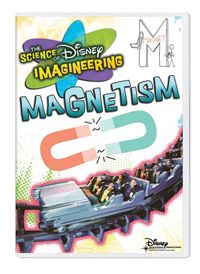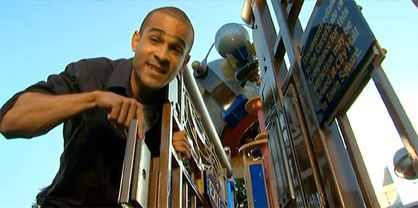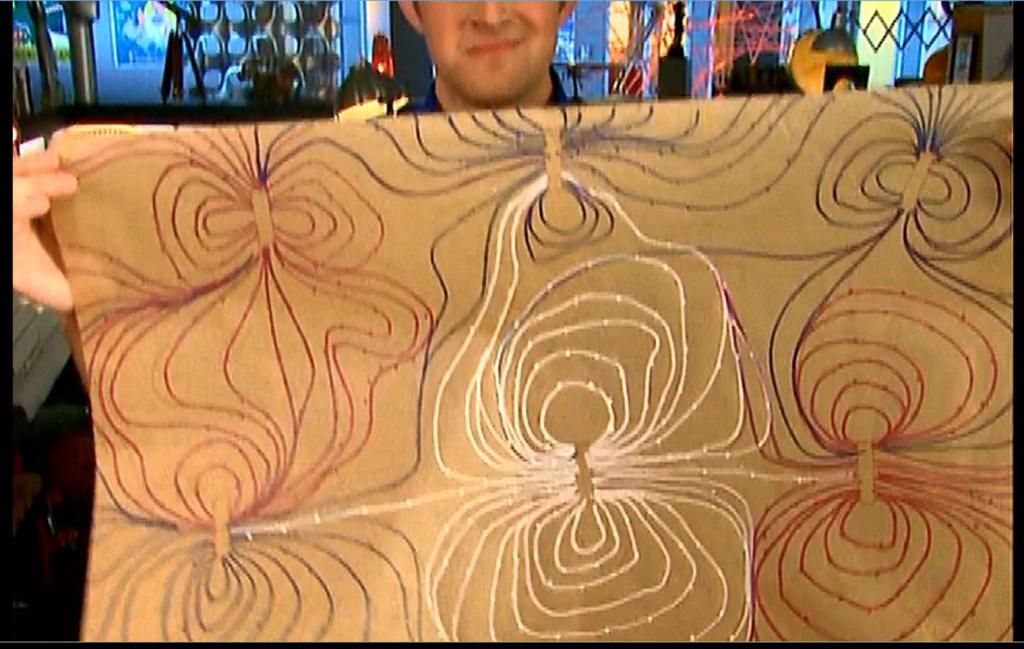Last fall when I was sharing about my Hands-On Science co-op class I realized I’d missed making detailed summaries of some of the Science of Disney Imagineering DVD’s. So I’m finally going to fulfill my promise to get through all of them. I’m going to write up one for the next three weeks, starting here with Magnetism.

Asa’s Invention: The folks down the road at Universal Studies will probably cry copyright infringement because the metal wall Asa scales with magnets attached to his hands and knees seemed very Spiderman-esque.
Defined Terms: Magnetism, ferromagnetism, magnetic field, permanent magnet, electromagnet
Disney Rides and Attractions that exemplify the theme:
If you watch these DVD’s to see the cool rides, you’ll probably be disappointed in this title. Asa spends more than 14 (of the 25) minutes in his work area explaining the concepts. When he finally goes to the parks, he focuses on some of the more mundane jobs they do—like holding nametags without puncturing shirts.
We get a brief tease of the Astro Orbiter in Tomorrowland, but the focus is on the electromagnetic exit gate. I must say it is amazing that it only takes the energy of a night light to create a hold capable of withstanding 1200 pounds of pull.

The we finally make a visit to a thrill ride—the Rock ‘n’ Roller Coaster where the breathtaking launch (60 mph in 2 seconds) relies on magnets. Beneath the track, 106 electromagnets are arranged in two parallel rows. The electromagnets turn on and off in sequence to attract powerful rare earth magnets on a pusher car at an increasing speed down the track. The twelve rare earth magnets are each about three feet long and weigh to much to be attached to the coaster train itself.

I couldn’t find a photo of the final magnetism sample because Disney workers hard to camouflage its audio speakers, like the 270 in the Pirates of the Caribbean ride. Most of the discussion takes place in a sound room. It is the rapid change in electric current that causes magnets in a speaker’s diaphragm to move in and out. This vibrates the air in front of the speaker and makes the sound waves we hear.
Quiz 15 T/F and multiple choice questions
Try It Yourself
 Its part science part art project. Begin by placing several bar magnets around a sheet of butcher paper. Then place a compass near one of the magnets. This will cause the needle to be attracted to the magnet’s pole rather than the earth’s. Draw dots at the ends of the needle and then move the compass to the new dot you drew and see how the needle shifts again—draw a new dot. Keep going with all the magnets and you’ll end up with a visual representation of the magnetic field.
Its part science part art project. Begin by placing several bar magnets around a sheet of butcher paper. Then place a compass near one of the magnets. This will cause the needle to be attracted to the magnet’s pole rather than the earth’s. Draw dots at the ends of the needle and then move the compass to the new dot you drew and see how the needle shifts again—draw a new dot. Keep going with all the magnets and you’ll end up with a visual representation of the magnetic field.
If you’d like to check out the other title is the Science of Disney Imagineering series, click here.

No comments:
Post a Comment